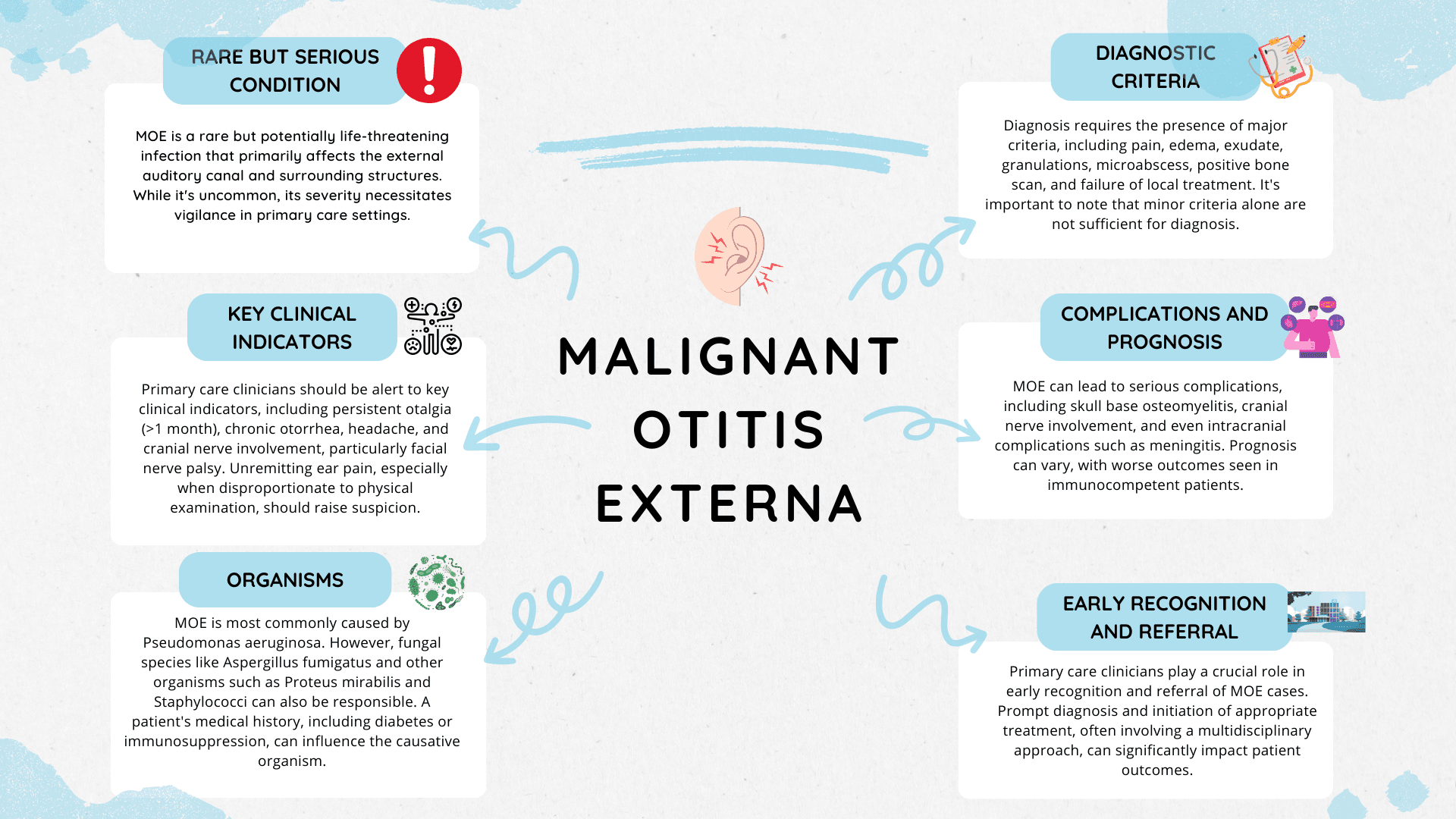Download A4Medicine Mobile App
Empower Your RCGP AKT Journey: Master the MCQs with Us!

Malignant otitis externa (MOE) is a formidable and potentially life-threatening infection that poses significant challenges to both patients and healthcare providers. This study delves into the intricate aspects of MOE, shedding light on key prognostic indicators and providing valuable nationwide data that individual healthcare institutions can utilize to establish treatment benchmarks. This condition, while relatively rare, demands a comprehensive understanding due to its multifaceted nature and the potential for severe complications.
The epidemiological landscape of MOE unveils several intriguing trends. While the prevalence of this condition has witnessed a decline in recent years, it has not yet reached the threshold to be classified as a rare disease. Modern advancements in antimicrobial therapy have played a pivotal role in curbing its prevalence, but it remains a clinically significant concern.
One notable epidemiological pattern is the strong association of MOE with advancing age. Patients aged 60 years and older are particularly vulnerable to this infection, highlighting the impact of ageing on disease incidence and mortality. Several theories have emerged to elucidate this connection, including the diminished epithelial migration within the ear canal and the presence of microvascular disease, which hampers the immune response. Moreover, advanced age often coincides with comorbidities, such as...
Try our Free Plan to get the full article.